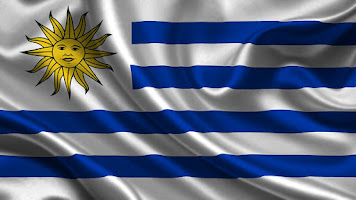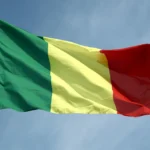
The country of Uruguay is officially known as the Oriental Republic of Uruguay. It is located in southeastern South America and borders Brazil, Argentina and the Atlantic. Uruguay is the second smallest country in South America. Before European colonization in 1680, Uruguay was inhabited only by a small tribe called Charrúa, who had been driven from Paraguay by the Guarani. Although the Spanish attempted to colonize the area in the 16th century, they encountered fierce resistance from the natives. Cattle to the region that permanent settlements were established. Uruguay gained independence in 1825, but the political and military conflict continued into the 2000s. Today Uruguay occupies a prominent place in terms of peace, democracy and quality of life in South America.
Uruguay is the smallest Spanish speaking country in South America.
The name Uruguay originates from the name of the Uruguay River, which itself originates from the Guarani language meaning ‘river of the painted birds’.
Even though Uruguay is such a small country it still manages to send more troops to United Nations peacekeeping missions than any other country in the world.
The first European explorer to reach Uruguay was Juan Diaz de Solis, in 1516.
Like Argentina, Brazil, Australia and New Zealand, there are more cows than people in Uruguay.
Uruguay’s capital city and its largest city is Montevideo.
59.6% of Uruguay’s land is used for sheep and cattle farming.
Uruguay encompassed an area of 68,037 square miles.
Even though so many Uruguayans love to eat beef, they don’t keep it all for themselves as beef is also the main export of the country.
Uruguay’s population is estimated to be more than 3.3 million people.
Uruguay has the longest national anthem in the world. The Orientales, la Patria o La Tumba (“Uruguayans, the Fatherland or the Grave”) is almost 5 minutes long.
The official language of Uruguay is Spanish.
The first international soccer match was hosted in Uruguay in 1902 as was the first-ever World Cup tournament in 1930.
The only country in South America that is smaller than Uruguay is Suriname.
In 2020 it was estimated that between 98-100% of Uruguay’s electricity is generated through renewable sources.
Uruguay is Latin America’s only country located completely outside of the tropics.
In Uruguay, the 29th day of each month is officially called Gnocchi Day.
Uruguay became the first country in the world to legalize the marijuana trade, in 2013.
In Uruguay, salt is banned from schools and from being served on tables in restaurants.
The only two gold Olympic medals that Uruguay has won are the 1924 and 1928 gold medals for football (soccer).
Being gay was legalized in Uruguay back in 1934 (long before the US in 2003 and the UK in 1967), anti-discrimination laws in place since 2003, adoption laws since 2009, and gay marriage implemented in early 2013.
Uruguay’s monetary unit is the Uruguay peso.
Uruguay legalized divorce as far back as 1907 and was the first country in South America to establish a welfare state in 1903.
Major industry in Uruguay includes food processing, transportation equipment, electronic machinery, petroleum products, beverages, chemicals and textiles.
Uruguay is regarded as the most secularised nation in Latin America with only 42% of the population identifying as Catholic and 37% as religiously unaffiliated.
Major agriculture in Uruguay includes rice, corn, barley, wheat and fishing.
Punta del Este is one of the main tourist attractions in Uruguay, a city and resort on a peninsula surrounded by gorgeous beaches, often called “the Monaco of the South” or “the St. Tropez of South America.”
Major exports from Uruguay include rice, meat, leather products, dairy products, wool and fish.
Major imports into Uruguay include crude petroleum, automobiles, machinery and chemicals.
Uruguay’s natural resources include hydropower, fisheries, minerals and arable land.
There are more than 1.4 million people in Uruguay who use the internet.
Uruguay celebrates its Independence Day in August 25th to celebrate the day in 1825 when it gained its independence from Brazil. On this day the President hoists the Uruguayan flag, a speech is given by the Vice President, followed by an army parade, and it is common to celebrate the art of Uruguay’s people.
Uruguay has the longest national anthem in the world. It has 11 verses, followed by the chorus (after each verse), and 105 bars of music. It lasts about 5 minutes.
Uruguay’s coast is often compared to the Riviera. Uruguay has 500 kilometers of coastline, with beautiful beaches.
The highest point in Uruguay is Cerro Catedral, at 514 meters.
Uruguay’s longest river is the Rio Negro.
Uruguayan cowboys are called Gauchos.
Uruguay’s climate is a pleasant one, being warm and temperate.
Uruguay has one of the highest literacy rates in the world.
On Uruguay’s flag there is a yellow sun in the upper left corner, with a human face.









I recently came across your blog post and I found it to be really informative and well-written. Your writing style is clear and engaging, and you managed to explain complex ideas in a way that is easy to understand. I particularly enjoyed the section on [insert specific topic], as I found it to be very insightful. Thank you for sharing your knowledge and expertise, and I look forward to reading more of your content in the future!